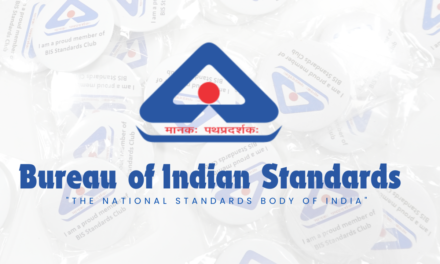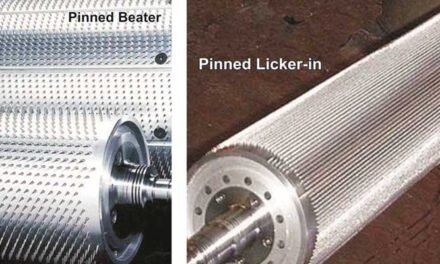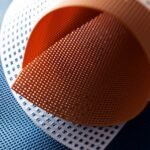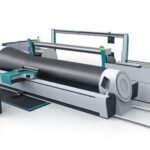How is the demand for coated fabrics growing in industries like automotive, upholstery, and construction?
The demand for coated fabrics in industries like automotive, upholstery, and construction is growing due to the increased need for durable, weather-resistant, and performance-enhancing materials. Coated fabrics provide essential benefits like waterproofing, UV protection, abrasion resistance, and flexibility, making them ideal for these sectors. Here’s an overview of how demand is expanding in each industry:
1. Automotive Industry:
The automotive sector is increasingly adopting coated fabrics for interior and exterior applications due to their enhanced durability, aesthetic appeal, and functionality. These fabrics contribute to improving vehicle performance and comfort, as well as meeting safety and regulatory standards.
Applications in Automotive:
- Upholstery and Seat Covers: Coated fabrics, particularly PVC, PU leather, and polyester, are used for car seat covers, providing a durable, easy-to-clean surface that can withstand wear and tear. PU-coated fabrics are especially popular due to their environmentally friendly properties, as they are less toxic than traditional PVC.
- Trend: The shift towards vegan leather (made from PU or other coated fabrics) is gaining traction, driven by consumer demand for sustainable and animal-free products.
- Convertible Roofs: Coated fabrics are used for convertible car roofs, providing water resistance, UV protection, and lightweight performance. Canvas and PVC-coated polyester are common choices for soft tops on convertible cars.
- Exterior Car Covers and Tarps: Coated fabrics, such as PVC-coated polyester or nylon, are used in vehicle covers to protect cars from weathering, UV damage, and scratches.
- Interior Components: Coated fabrics are also used for car floor mats, headliners, and door panels to improve resistance to stains, moisture, and wear.
Growth Drivers:
- Demand for Eco-Friendly Options: Consumers are increasingly concerned with the environmental impact of automotive materials, pushing manufacturers to adopt sustainable coated fabrics (like water-based coatings or bio-based polyurethanes).
- Comfort and Performance: Coated fabrics are being used to improve vehicle comfort, soundproofing, and temperature regulation, making them more desirable in the high-performance and luxury car markets.
- Durability and Longevity: Coatings enhance the durability of materials, which is particularly important in an industry that demands long-lasting and weather-resistant products.
2. Upholstery Industry:
The demand for coated fabrics in the upholstery sector is driven by their ability to meet the growing needs for durability, ease of maintenance, water resistance, and stain protection in both residential and commercial applications.
Applications in Upholstery:
- Furniture Upholstery: Coated fabrics like vinyl and PU leather are commonly used for couches, chairs, sofas, and office furniture due to their resilience and easy-to-clean surfaces. These materials can be stain-resistant, waterproof, and abrasion-resistant, making them ideal for high-traffic areas.
- Outdoor Furniture: Coated fabrics such as solution-dyed acrylics or PVC-coated textiles are frequently used in outdoor furniture like patio chairs, loungers, and cushions because they offer UV protection and moisture resistance, ensuring the furniture withstands the elements.
- Commercial Upholstery: In commercial settings like hotels, restaurants, and hospitals, coated fabrics are used in furniture and window treatments for their ability to resist stains, moisture, and wear. Flame-retardant coatings are often applied to meet fire safety standards.
- Vehicle and Marine Upholstery: Coated fabrics are also popular in marine and automotive upholstery, where the materials need to be resistant to saltwater, UV rays, and high levels of humidity.
Growth Drivers:
- Consumer Demand for Low Maintenance: As consumers become more focused on ease of maintenance, fabrics that resist stains and moisture, such as waterproof and stain-resistant coated textiles, are becoming more desirable.
- Sustainability and Eco-Conscious Products: As with the automotive industry, there’s a growing trend toward using sustainable coatings (such as bio-based coatings or water-based PU), which are driving innovation in the upholstery market.
- Commercial and Hospitality Growth: The rise in demand for upscale hotels, restaurants, and public spaces requires durable, low-maintenance, and aesthetically pleasing materials, which has spurred the growth of coated fabrics in contract upholstery.
3. Construction Industry:
The construction sector is increasingly relying on coated fabrics for protective applications and weather-resistant materials. Coated textiles offer essential properties like waterproofing, UV resistance, and fire protection, making them integral to temporary structures, building protection, and site safety.
Applications in Construction:
- Temporary Structures and Tents: Coated fabrics are widely used in the construction industry for temporary shelters, scaffolding covers, and worker protection tents. These fabrics, often PVC-coated polyester or polyethylene, are used because of their strength, weather resistance, and ability to withstand heavy loads.
- Example: Construction companies use coated fabric tarps to protect building materials from rain, snow, and wind.
- Scaffolding and Tarpaulins: Heavy-duty coated fabrics are used in the creation of tarpaulins and scaffolding covers to provide protection from the elements during construction projects. These fabrics need to be abrasion-resistant and waterproof.
- Inflatable Structures: Coated fabrics are used in inflatable shelters or worksite shelters, providing a temporary, portable, and weather-resistant structure that can be easily assembled or disassembled.
- Building Facades: In some instances, coated fabrics (such as Teflon-coated fabrics) are used in the cladding or facade of buildings to provide weatherproofing while allowing for transparency (light permeability) and aesthetic appeal.
Growth Drivers:
- Sustainability in Construction: There’s an increasing push for eco-friendly construction materials, including the use of sustainable coated fabrics that are recyclable or biodegradable. This is part of the broader trend toward green building and sustainable architecture.
- Weather Resistance for Long-Term Durability: As the construction industry faces more unpredictable weather patterns due to climate change, the demand for weatherproof, UV-resistant, and wind-resistant coated fabrics is growing to protect workers and materials on construction sites.
- Temporary and Mobile Structures: The demand for temporary structures (e.g., site offices, portable storage, construction tents) is increasing, especially in urban areas where land space is limited. Coated fabrics offer a cost-effective, lightweight, and quick-to-install solution for these applications.
The demand for coated fabrics in the automotive, upholstery, and construction industries is experiencing significant growth, driven by the need for high-performance materials that offer durability, weather resistance, sustainability, and easy maintenance.







